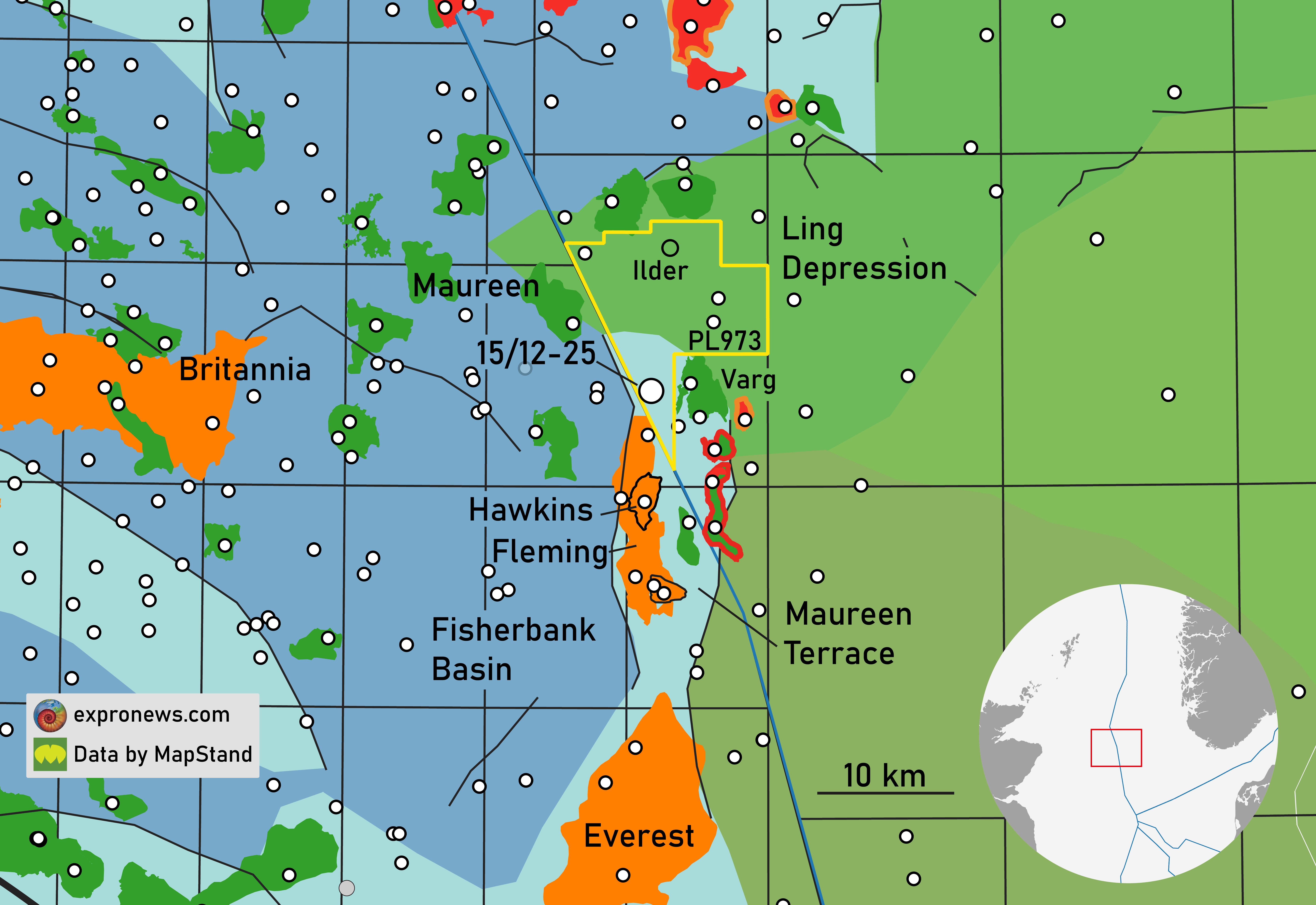At the end of last week, Chrysaor Norway spudded well 15/12-25 targeting the Jerv prospect in the Norwegian North Sea in an attempt to prove condensate in Paleocene Maureen sandstones.
Situated just 600 m from the UK-NO offshore boundary, this well has the potential to drill into an accumulation that straddles the median line and thus become a cross-border discovery.
The Jerv well is being drilled in an area with proven prospectivity in the Paleocene Maureen sands. The Fleming field (also operated by Chrysaor) just south of 15/12-25 produces condensate from Paleocene Maureen sands, whilst the decommissioned Maureen field to the northwest contains oil.
The Maureen Terrace
The area where the well is being drilled is known as the Maureen Terrace, a structure in between the Ling Depression in the northeast and the Fisherbank Basin in the southwest. Although the name Ling Depression suggests deeply buried strata, when moving from the Fisherbank Basin in a north-eastern direction towards the Ling Depression the base of the Paleocene would get shallower along the way. One might then ask the question, what is the trapping mechanism for Jerv? Looking at a cross-section shown in a paper on the Fleming field and underlying Hawkins reservoir, it is clear that the Mesozoic and Cenozoic successions have been uplifted through salt movement along the boundary of the Fisherbank Basin and the Maureen Terrace. It is anticipated that a similar trapping style may be present at Jerv, given the similarity in structural position.

No Fulmar prospectivity expected
This begs another question. Given that there is an Upper Jurassic Fulmar accumulation below the Fleming field, and another Fulmar reservoir a little further to the east (Varg), is there no chance to find a Fulmar reservoir at Jerv? According to the Environment Agency, the well is expected to drill to a total depth of 2,800 m. The top Fulmar drilled by well 22/05a-1a (Hawkins field) was drilled at around 3000 m, so if the depth of the top Fulmar does not significantly change moving a little further north, it is probably safe to conclude that Chrysaor did not identify a Fulmar target at Jerv.
Grevling development
Where the discovery of hydrocarbons would add strategic reserves to the Fleming/Britannia/Everest cluster for Chrysaor, for partner Okea (20%) it adds momentum behind the development of the Grevling discovery a little further to the north. The Jerv well is the first exploration well Okea is involved in since 2019, and together with the planned Ilder well in the same licence (PL973, see map), the company is now embarking on an exciting year of exploration activities.
HENK KOMBRINK




